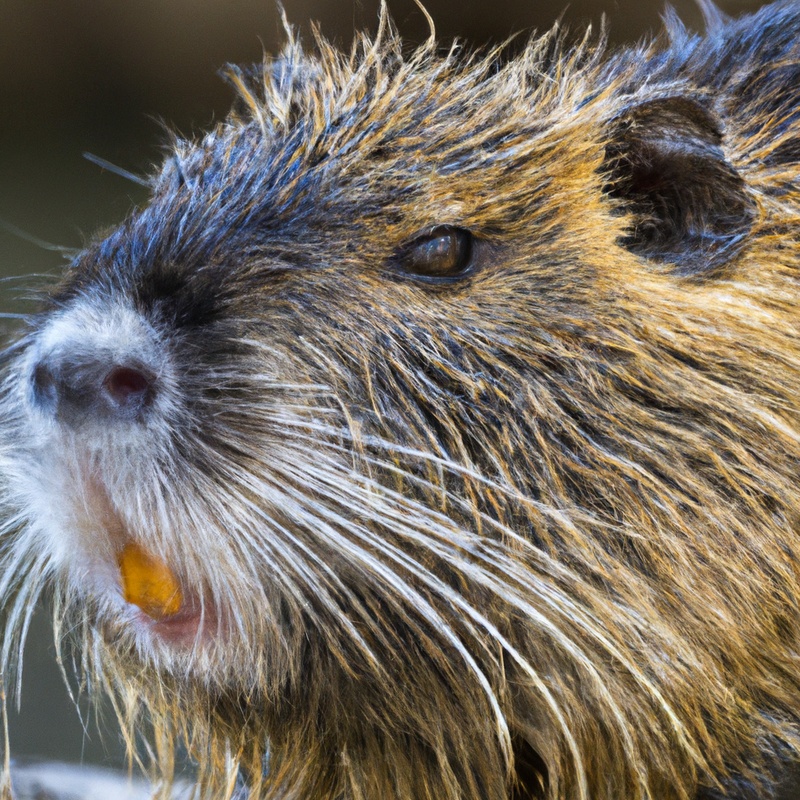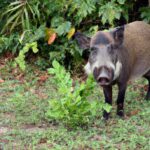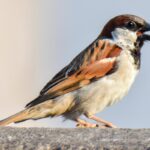Key Takeaways:
- Nutria, an invasive species, are being hunted in California to protect native habitats.
- The state has implemented a targeted hunting program to manage the rapidly growing nutria population.
- Hunting nutria in California is a critical conservation effort to prevent further environmental damage.
- Ongoing hunting efforts aim to reduce the impact of nutria on agriculture and infrastructure in the state.
Hey there, nature enthusiasts and hunters! Are you ready to embark on an exciting adventure in the picturesque landscapes of California?
Well, get your gear ready because today I’m diving into the thrilling world of hunting Nutria.
These furry creatures may seem harmless, but they wreak havoc on California’s ecosystems, agriculture, and infrastructure.
As an expert in wildlife management, I’m here to shed light on the importance of Nutria control, the regulations and opportunities for hunting them in California, and even give you some tips on how to spot, approach, and shoot these elusive critters.
So, let’s dig in and discover the ins and outs of Nutria hunting in the Golden State!
Pros | Cons | |
Environmental Impact | Helps control invasive species | Can disturb native wildlife and ecosystems |
Economic Benefits | Revenue from fur sales and hunting licenses | May contribute to decline in nutria population, reducing revenue |
Health Benefits | Reduces risk of nutrient loss in wetlands | Potential for exposure to zoonotic diseases |
Regulation and Management | Allows for population control and monitoring | Requires strict compliance with hunting regulations |
Understanding Nutria and their Impact in California
What are Nutria?
Nutria, also known as coypu, are large semi-aquatic rodents native to South America.
They have webbed feet and long, scaly tails, which help them navigate through water.
These rodents have orange or reddish-brown fur and can weigh up to 20 pounds.
Nutria are herbivores and feed mainly on aquatic plants, including cattails and water lilies.
They are highly adaptable and can live in a variety of freshwater habitats, including marshes, swamps, rivers, and lakes.
Unfortunately, nutria have become an invasive species in many parts of the world, including California, where they can cause significant damage to wetlands and agriculture.
Nutria’s Impact on California’s Ecosystems
Nutria have had a significant impact on California’s ecosystems. Their burrowing behavior destroys wetlands, leading to soil erosion and the loss of native vegetation.
This disruption can harm water quality and impact other aquatic species.
Nutria also outcompete native species for food, affecting the balance of the ecosystem. Additionally, their presence can increase the spread of invasive plants and disease.
Efforts to control and eradicate nutria are necessary to protect California’s delicate ecosystems and preserve biodiversity.
Nutria’s Threats to Agriculture and Infrastructure
Nutria, those large, invasive rodents, pose significant threats to both agriculture and infrastructure in California.
Their voracious appetite for vegetation can devastate crops, causing major economic losses for farmers.
Additionally, their burrowing habits can lead to erosion and damage to levees, embankments, and irrigation systems, compromising the integrity of water management infrastructure.
It’s imperative that measures are taken to control and eradicate nutria populations to safeguard our agricultural industry and vital infrastructure.
The Importance of Nutria Control
Why Nutria Control is Necessary in California
Nutria control is necessary in California due to the negative impacts caused by these invasive species.
- Nutria damage wetland habitats, which are crucial for wildlife and water quality.
- They dig burrows that weaken levees, increasing flood risks.
- Nutria eat crops, affecting agricultural productivity and economic viability.
- Their rapid reproduction rate makes control essential to prevent population growth.
- Effective nutria control measures can minimize ecological and economic damage.
To protect California’s ecosystems and agriculture, managing nutria populations is imperative.
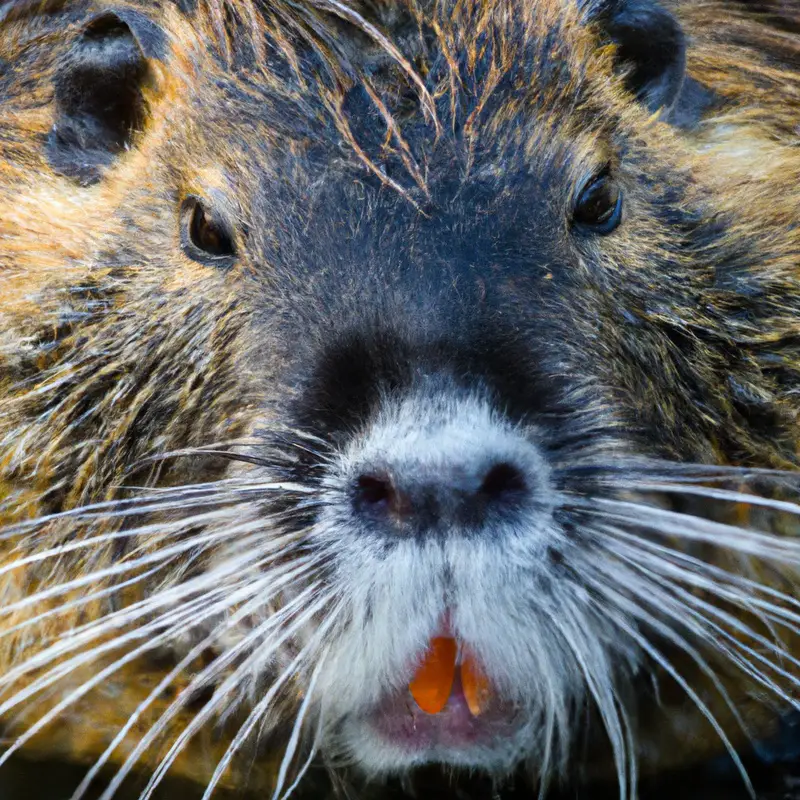
The Economic and Environmental Consequences of Nutria Infestations
Nutria infestations have significant economic and environmental consequences. These large rodents cause immense damage to crops, resulting in substantial financial losses for farmers.
Moreover, their burrowing activities weaken levees, leading to increased flooding risks.
Nutria also pose a threat to native wildlife by outcompeting them for resources and destroying habitats. Additionally, their rapid reproductive rate exacerbates the infestation problem.
Controlling nutria populations is crucial for preserving ecosystems, safeguarding agricultural productivity, and mitigating the financial burden on communities affected by their presence.
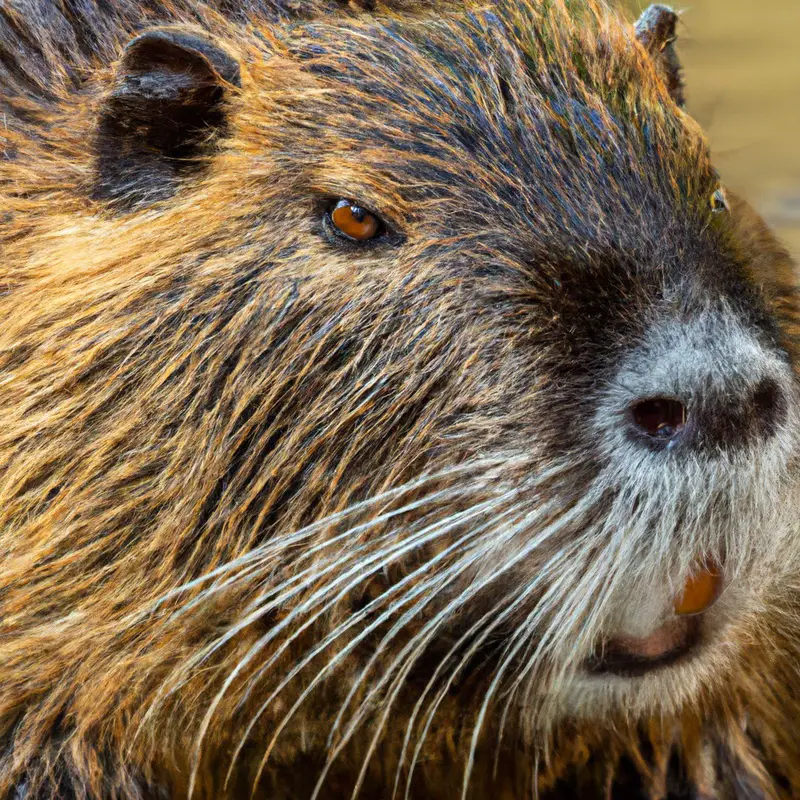
Benefits of Nutria Control Efforts
Efforts to control nutria populations have several important benefits. First, they help protect natural habitats and ecosystems from the destructive impact of nutria.
By reducing their numbers, we can prevent damage to wetlands and vegetation.
Second, nutria control efforts help to safeguard water quality by preventing contamination from their waste. Third, controlling nutria populations can also protect agricultural crops and infrastructure, reducing economic losses.
In addition, by keeping nutria numbers in check, we can minimize the risk of the spread of diseases that they may carry.
Overall, nutria control efforts contribute to the preservation of biodiversity and the well-being of local communities and ecosystems.
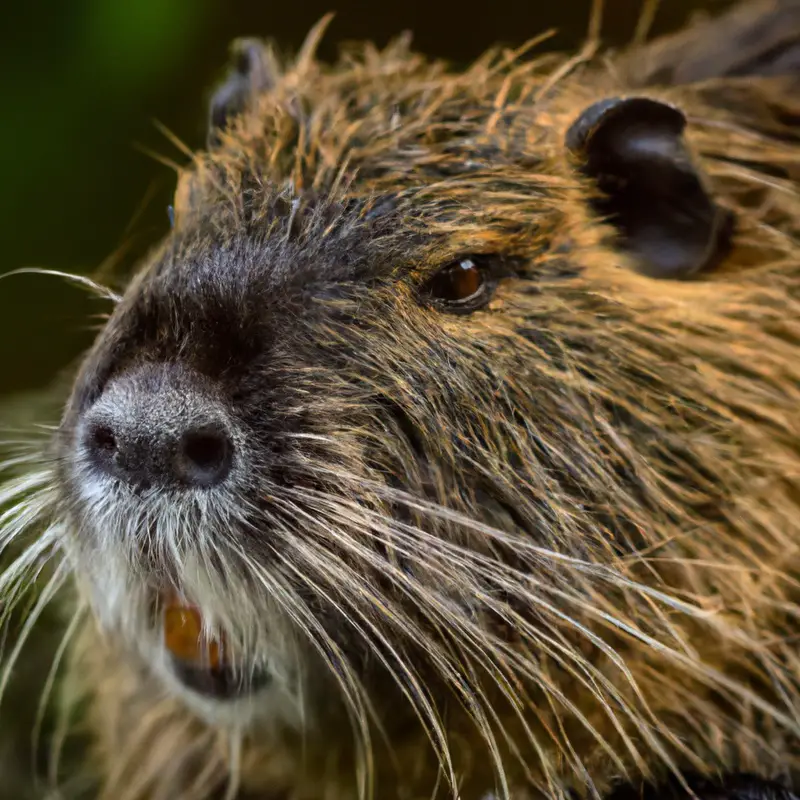
Hunting Nutria: Regulations and Opportunities in California
Hunting Nutria: Legal Framework in California
In California, the legal framework for hunting nutria is governed by the California Department of Fish and Wildlife (CDFW). The CDFW classifies nutria as invasive and has implemented regulations to manage their population.
It is legal to hunt nutria in California with a valid hunting license and within the designated hunting seasons and areas.
However, it is important to note that specific regulations may vary depending on the county. It is crucial to stay updated with current regulations and follow all hunting laws to ensure compliance and contribute to nutria population control efforts in the state.
Licensing and Permit Requirements for Hunting Nutria
To hunt nutria in California, you need a valid hunting license issued by the California Department of Fish and Wildlife (CDFW).
A basic hunting license will suffice, but it’s important to check for any additional restrictions or requirements specific to nutria hunting.
There are no specific permits required to hunt nutria in California at the moment.
However, it’s always a good idea to stay updated on any changes in regulations, as they may vary from year to year.
When planning to hunt nutria, make sure to follow all hunting regulations and restrictions set by the CDFW.
This includes adhering to bag limits, hunting seasons, and any other guidelines specific to the area where you plan to hunt.
Remember, responsible hunting practices not only ensure the sustainability of the nutria population but also help protect the environment.
Happy hunting!
Hunting Seasons and Bag Limits
Hunting Seasons and Bag Limits in California are important factors to consider before embarking on your nutria hunting adventure. In California, the hunting season for nutria is open year-round, allowing you to pursue this invasive species whenever you choose.
However, it is crucial to note that bag limits are in place to ensure responsible hunting practices.
The bag limit for nutria in California is currently set at no more than 5 nutria per day. It is essential to follow these regulations to protect the ecosystem and maintain a sustainable population of nutria in the state.
Happy hunting!
Preparing for Nutria Hunting:
Choosing the Right Firearm and Ammunition
To choose the right firearm and ammunition for nutria hunting in California, you’ll need to consider a few factors.
First, select a firearm that is appropriate for hunting smaller mammals, such as a .22 caliber rifle or a shotgun.
Make sure you are comfortable and skilled with the chosen firearm.
For ammunition, choose quality rounds that are suitable for small game hunting.
It’s important to follow all state regulations and safety guidelines when selecting and using your firearm and ammunition.
Essential Hunting Gear for Nutria Hunting
When it comes to nutria hunting, there are a few essential gear items you’ll want to have on hand. Firstly, a reliable shotgun is key, ideally with a 12 or 20-gauge chamber.
Secondly, invest in waders or hip boots to navigate the marshy environments that nutria typically inhabit.
Thirdly, a good pair of binoculars will help you scan the area for these elusive creatures. Additionally, don’t forget to bring plenty of ammunition, as well as a sturdy and comfortable hunting backpack to carry your gear.
With these essential items, you’ll be well-prepared for a successful nutria hunting expedition.
Understanding Nutria Behavior and Habitats
Nutria, also known as coypu, are semi-aquatic rodents that inhabit wetlands and waterways.
They are primarily active during dawn and dusk, preferring to rest during the day.
Nutria build burrows in the banks of rivers, lakes, and ponds, using vegetation for camouflage.
They are herbivorous, feeding on aquatic plants and crops, which can cause significant damage to agricultural areas.
Understanding their behavior and habitats can help you locate and track nutria more effectively when hunting.
Look for signs of their presence, such as tracks, trails, and feeding areas, near bodies of water.
Be patient and observant, as nutria are known to be wary of human activity, and approach hunting areas quietly to increase your chances of success.
Nutria Hunting Techniques and Tips
Spotting Nutria and Identifying Sign of Activity
Spotting Nutria and identifying signs of their activity is important for successful hunting. Look for areas with dense vegetation near water bodies, as Nutria prefer these habitats.
Keep an eye out for their distinctive features: dark brown fur, round bodies, and long, orange teeth.
Look for their cone-shaped feedings, known as “eat-outs,” along the shoreline or in marshy areas. Pay attention to tracks, which resemble small handprints, along muddy banks.
Additionally, be on the lookout for their feces, which are cylindrical and resemble dog droppings.
Identifying these signs will greatly increase your chances of finding Nutria in California.
Tracking and Approaching Nutria
Tracking and approaching nutria requires a combination of patience and stealth.
Start by looking for signs of their presence, such as trails, droppings, or evidence of feeding.
Once you have located a potential area, move slowly and quietly to avoid spooking them.
Nutria are typically found near water, so be sure to check marshes, rivers, or ponds.
When approaching, stay low to the ground and use natural cover to camouflage your movements.
Remember to always be aware of the wind direction to avoid scent detection.
Shooting Techniques for Nutria Hunting
When it comes to shooting techniques for nutria hunting, there are a few key things to keep in mind.
Firstly, it’s important to be patient and wait for the right moment to take your shot.
Aiming for the head or vital organs will ensure a clean and humane kill.
Additionally, using a shotgun with non-toxic shot is recommended to protect the environment.
Remember to always follow local hunting regulations and practice safe firearm handling.
Happy hunting!
Skinning, Processing, and Utilizing Nutria
Proper Skinning Techniques for Nutria
Proper skinning techniques for nutria are important to ensure a successful and efficient process.
Here are some tips to help you with skinning nutria:
- Start by making a small incision around the hind legs and carefully peeling back the skin, working your way towards the head.
- Use a sharp knife to separate the skin and flesh, being cautious not to puncture the skin.
- Once the skin is completely separated, continue to pull and stretch it until it’s free from the body.
- Remove any excess fat or tissue from the skin using a scraping tool.
- If you plan on utilizing the fur, take extra care to keep the skin intact and avoid any unnecessary damage.
- Finally, make sure to thoroughly clean and dry the skin before storing or further processing it.
Remember, practicing and perfecting your technique will lead to better results.
Happy hunting!
Processing Nutria Meat for Consumption
Processing Nutria Meat for Consumption is a simple and rewarding task. Once you have harvested the nutria, begin by removing the fur from the carcass.
Next, clean the meat thoroughly, making sure to remove any excess fat or connective tissue.
At this point, you can choose to marinate the meat for added flavor. When it’s time to cook, there are various methods you can use, including roasting, grilling, or stewing.
Finally, make sure to thoroughly cook the nutria meat to ensure it is safe to eat.
Enjoy your delicious and sustainable meal!
Creative Recipes and Utilization of Nutria Products
Now let’s get to the fun part – creative recipes and utilization of nutria products! Nutria meat is versatile and can be used in various dishes.
One popular recipe is nutria gumbo, a delicious and hearty stew made with the meat, vegetables, and a flavorful broth.
You can also try nutria sausages, burgers, or even use it as a substitute for other meats in your favorite recipes.
The possibilities are endless! Additionally, nutria fur can be used for making hats, gloves, and other clothing items.
By exploring different recipes and products, you can make the most out of your nutria harvest.
Get creative and enjoy the unique flavors and benefits of this sustainable protein source!
Frequently Asked Questions (FAQs) about Nutria Hunting in California
Can anyone hunt Nutria in California?
Yes, anyone can hunt nutria in California! As a non-native species, nutria are considered an invasive species and can be damaging to the environment.
Therefore, in an effort to control their population, California allows anyone to hunt nutria.
However, it is important to note that a hunting license and the appropriate permits are required.
Additionally, it is crucial to follow all hunting regulations and guidelines set by the California Department of Fish and Wildlife to ensure a safe and responsible hunting experience.
Are there any restrictions on selling Nutria pelts or meat?
There are currently no restrictions on selling Nutria pelts or meat in California.
The California Department of Fish and Wildlife encourages the harvesting and selling of Nutria as a method of controlling their population.
However, it is important to note that Nutria pelts and meat must still meet the standard requirements for selling and must be handled and processed in accordance with state and local health regulations.
It is advisable to check with local authorities and follow proper procedures when selling Nutria products.
What is the best time of year to hunt Nutria in California?
The best time of year to hunt Nutria in California is during the winter months.
Nutria are most active and visible during this time, as they tend to forage and travel in cooler temperatures.
Additionally, winter is when their fur is thickest, making it easier to spot and track them.
It’s important to note that Nutria can be hunted year-round in California, but targeting them during the winter months increases your chances of a successful hunt.
Remember to check all local hunting regulations and obtain the necessary permits before heading out.
Happy hunting!
Final Verdict
Hunting Nutria in California is not only crucial for protecting the state’s delicate ecosystems and agriculture, but it also presents a unique opportunity for hunters to contribute to conservation efforts while enjoying a thrilling and rewarding experience. By controlling Nutria populations, we can mitigate the devastating economic and environmental consequences they pose.
With proper preparation, adherence to regulations, and understanding of Nutria behavior, hunters can successfully target these invasive species.
Moreover, skinning and processing Nutria can provide sustainable meat and other valuable products. So, let’s embrace Nutria hunting as a responsible and beneficial way to safeguard California’s natural resources.
